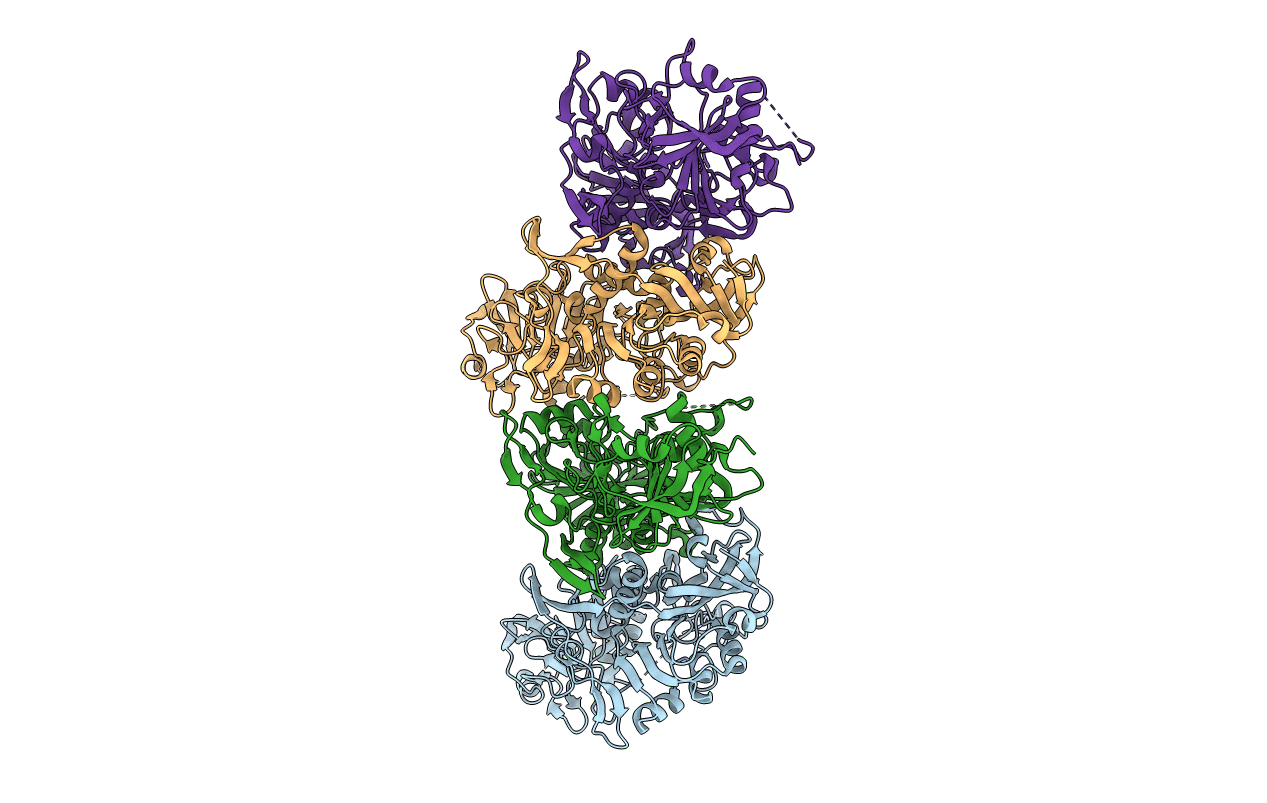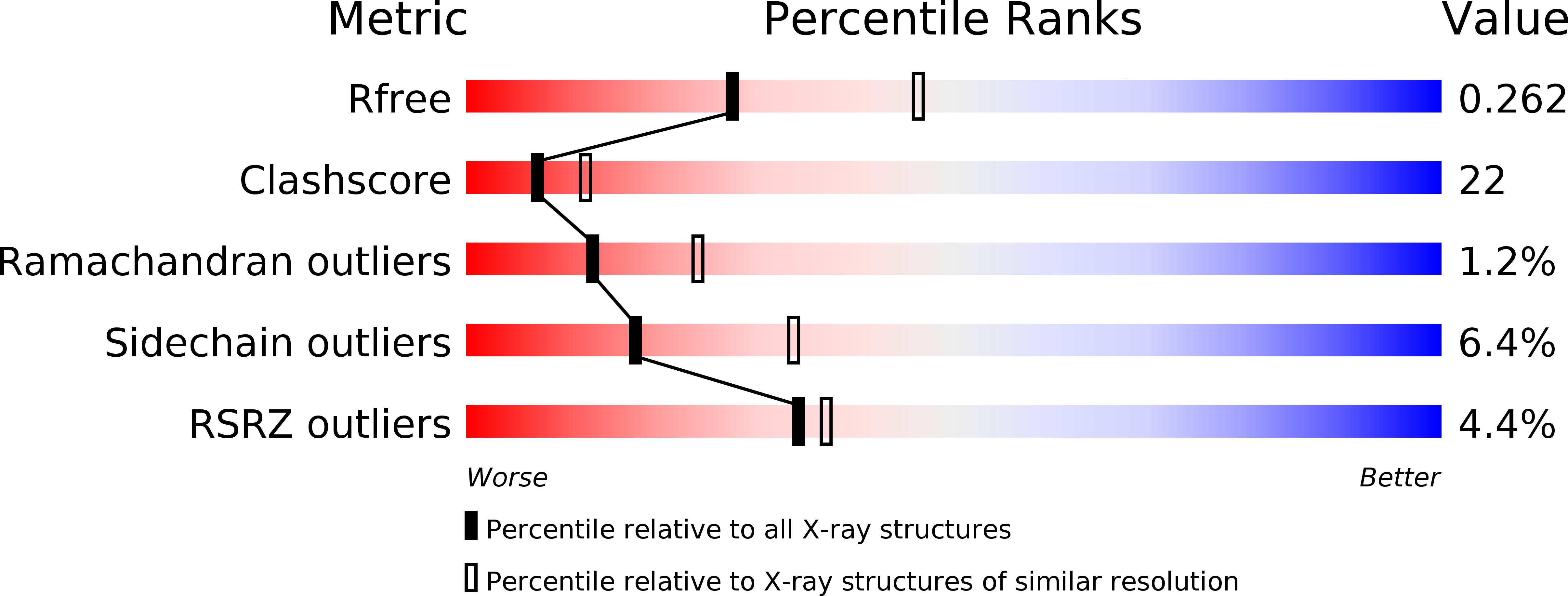
Deposition Date
2002-06-27
Release Date
2003-01-07
Last Version Date
2024-11-20
Entry Detail
PDB ID:
1M3E
Keywords:
Title:
Succinyl-COA:3-ketoacid COA transferase from pig heart (selenomethionine)
Biological Source:
Source Organism:
Sus scrofa (Taxon ID: 9823)
Host Organism:
Method Details:
Experimental Method:
Resolution:
2.50 Å
R-Value Free:
0.26
R-Value Work:
0.22
R-Value Observed:
0.24
Space Group:
P 1 21 1


